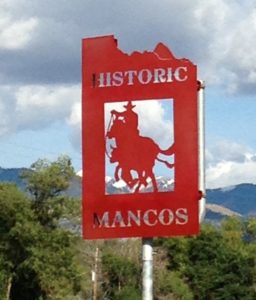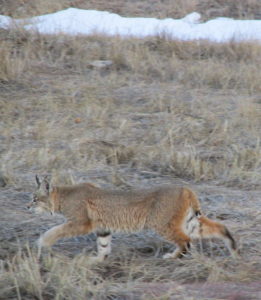Attending a Bureau of Land Management meeting is a bit like driving into thick fog. It can be bewildering, even if you have a  general sense of where you are and why you’re there. It helps if you have a lay of the land and good equipment.
general sense of where you are and why you’re there. It helps if you have a lay of the land and good equipment.
In the case of the recent BLM meeting in Mancos to discuss the Tres Rios Master Leasing Plan with members of the Southwest Resource Advisory Council (SWRAC) Oil & Gas Subgroup, the lay of the land is this:
- Hundreds of thousands of acres, some abutting Mesa Verde National Park, Canyons of the Ancients National Monument, and my backyard, are up for drilling consideration.
- The volunteer SWRAC subgroup, with 15 members from industry, agricultural, governmental, and recreational interests, is charged with giving recommendations to the BLM regarding this development.
- This group, formed a few months ago, is soliciting the LaPlata and Montezuma county public for comments.
The good equipment, like fog headlights, is knowing how the process works, who the players are, and what all the acronyms mean. Read more information here.
Suffice to say, the level of frustration exhibited by subgroup members and the public ran pretty high. One member complained that he “got nothing” useful from the public’s input. Another member questioned whether anyone could trust the process. Yet another said he felt the public meetings brought out only activists.
He’s right if activists are regular town folks who don’t want industry to run roughshod over their roads, air, water, and way  of life.
of life.
Listening to public comments (each speaker was given a few minutes at the end of the two-hour meeting), it was nice to see ranching, farming, and recreational interests coalesce. The general summation:
We don’t want ANY increased industry in this area. Enough already. Our aquifers will be threatened. Our real estate values will decrease. Our air quality will be compromised.
If you didn’t make the meeting and want to comment, you can send a letter to blm_co_trfo_oilandgas@blm.gov
I tried to keep my emotions out of it and appealed to the subgroup members from an economic angle. Here’s my letter:
Dear Subgroup members:
 Thanks very much for your volunteer efforts. I’m one of the many residents of southwestern Colorado who landed here for the area’s unique splendor and outdoor opportunities. As you contemplate recommendations to the BLM, please consider:
Thanks very much for your volunteer efforts. I’m one of the many residents of southwestern Colorado who landed here for the area’s unique splendor and outdoor opportunities. As you contemplate recommendations to the BLM, please consider:
Despite whatever revenues might be gained by leasing acreage to oil and gas interests, such leases will have a direct and detrimental impact on the existing economy.
The outdoor recreation industry is a $34.5 billion business in Colorado. According to a 2014 report by the Colorado Statewide Comprehensive Outdoor Recreation Plan, twenty-five thousand jobs exist here in the southwest region because of outdoor recreation.
The choice to live here has been quantified as a Willingness to Pay (WTP), an economic model developed by researchers at the University of Utah, Weber State University, and Utah State University for the huge, 784-page study looking into the land transfer prospects for Utah.
The researchers calculated significant WTP losses if there were more extraction in previously undeveloped areas. For example, folks pay huge money to hunt trophy elk in pristine wilderness. If industry comes in, stirs up the elk population and wrecks the panoramic photo opportunities, the WTP goes down. Hunters go elsewhere.
 Researchers found that folks move to places like Montezuma and LaPlata counties for the natural amenities of public lands and protected landscapes. Those conditions are directly connected to “local economic well-being, including in particular income levels, income growth, and employment growth.”
Researchers found that folks move to places like Montezuma and LaPlata counties for the natural amenities of public lands and protected landscapes. Those conditions are directly connected to “local economic well-being, including in particular income levels, income growth, and employment growth.”
In other words, people who move here aren’t slackers, living out of their cars, camping on BLM land, and cooking up ramen night after night. They’re smart, go-getters who contribute significantly to the economy:
“[They] tend to be highly educated and employed in skilled and professional occupations [which] can cause such areas to exhibit enhanced levels of “human capital.”
Generations ago, bringing more industry to the area might have made sense. But clearly, the area can move away from an economy reliant on environmentally damaging industries.
Keep it in the ground and it’s a win-win.